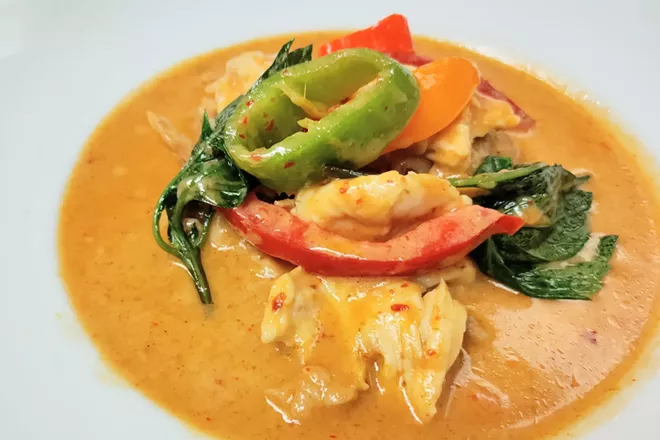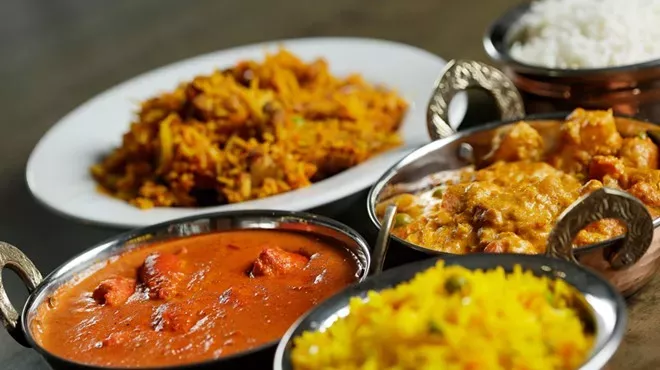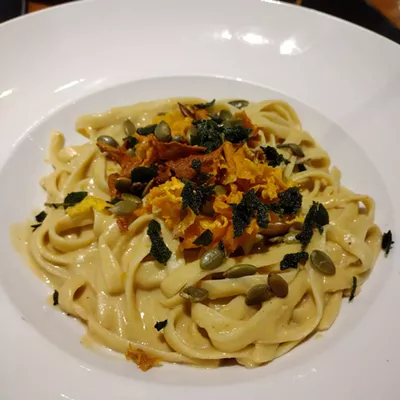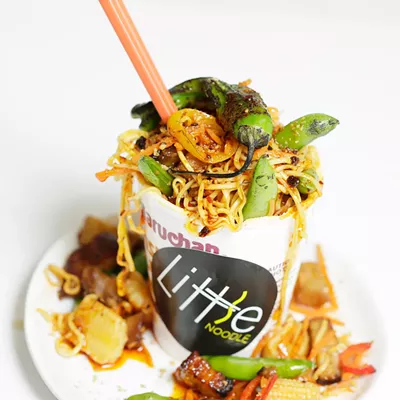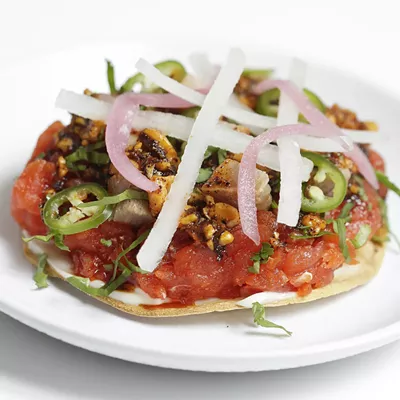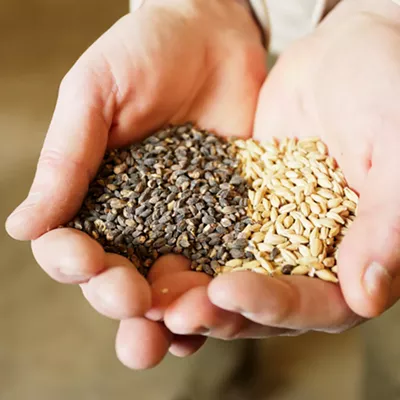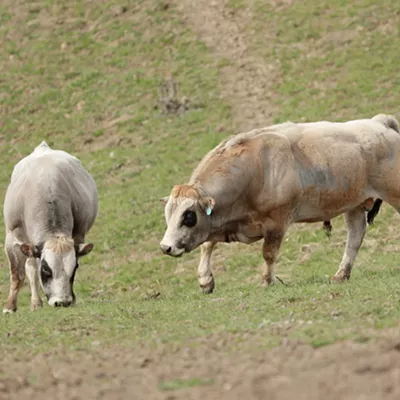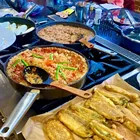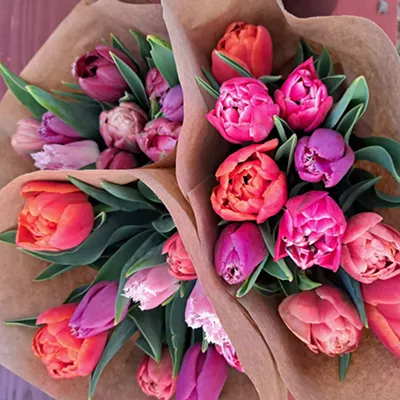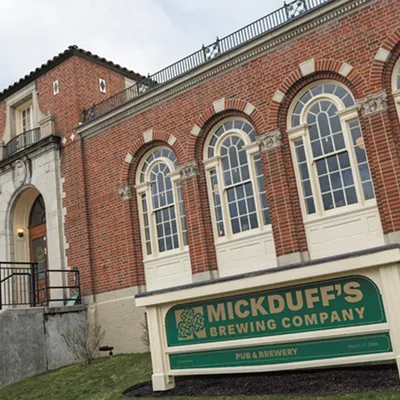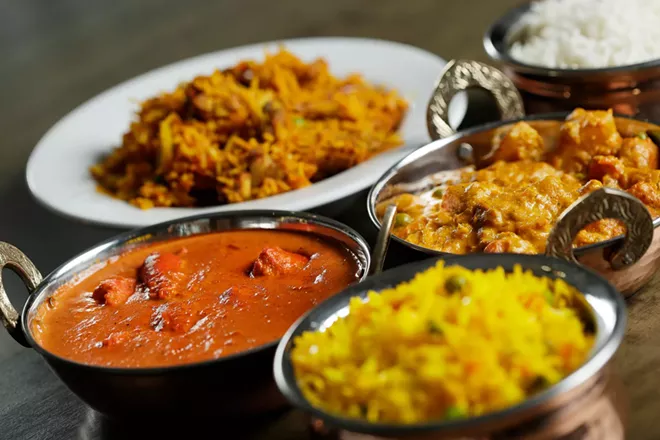
Asking someone how they like curry is a bit like, "Where are you from?" The answer varies widely and is often based on where a person was born, has lived or lives now.
For the longest time, I thought curry came in a tin from the grocery store that, when opened, emitted an earthy fragrance and a little puff of what looked like golden-hued flour. Now I know freshness is quintessential to flavor in such dishes as bright, citrusy green Thai curry and fiery, sweet-and-sour Indian vindaloo.
I know, too, that curry comes in many forms. Even so, the appearance of curry dishes on Japanese menus was unexpected, and inspired this exploration of what curry is, and is not.
"Some people think curry is any kind of sauce [like with] onion, tomato, ginger, garlic," says Deepika Dhawan, who opened India House Post Falls with husband Manoj Kumar in 2020. The couple also own Karma Indian Cuisine in Moscow, Idaho, and will soon open Karma Cuisine & Lounge at 2606 N. Monroe St. in Spokane in the old Hedge House restaurant building, which was most recently the home of Hi-Revs Bar.
The perception of curry as sauce might be a lingering translation error. In her definitive culinary history, Curry: A Tale of Cooks and Conquerors, Lizzie Collingham traces the word to the 1500s when Portugal invaded India and the Portuguese interpreted words referring to stewed and saucy dishes eaten by locals as "curry." Other experts, however, claim curry is a southern Indian word, kari, relating to black pepper.
Either way, curry is more about spice than sauce, Dhawan explains. Cinnamon, cloves, cumin, fennel, fenugreek, mustard, pepper and turmeric are commonly used.
At India House, for example, methi malai ($15-$16) with fenugreek is warm and faintly sweet, while vegetarian chana masala ($14) incorporates mild chili peppers into a tomato-based gravy to balance hearty chickpeas.
Like most traditions, cooking varies by region. Dhawan was raised in the Punjabi state of Jalandhar in northern India, and cooks with a lot of cumin seed or jeera. Mustard is more prevalent in southern Indian cuisine, she says.
Also unique to northern India is the term garam masala versus curry, which Dhawan uses on her restaurants' menus because audiences are accustomed to the word, she says.
"Garam masala is the backbone of our food," Dhawan says.
Dhawan makes fresh garam masala every few weeks, toasting bay leaf, black pepper, cardamom (both green and black), cinnamon, cumin and coriander until they bloom, then grinding them. She also uses asafetida, a fragrant, resin-like herbal substance with ties to ancient Persian culture, an indicator of the age and complexity of Indian cuisine.
Even as she continues to cook traditional north Indian foods, Dhawan is an advocate of experimentation in the kitchen. Cooking is an art form, she says.
"I think you can give yourself the opportunity to play with everything."
Looking at a map of India, it's easy to see how ingredients and culinary traditions may have traveled outward, west to the Middle East and Africa, for example, north to China and and east to Bangladesh, all of which serve dishes called or including curry.
Throughout Southeast Asia, which includes Indonesia, Malaysia, Philippines, Thailand and Vietnam, curry typically refers to a thick, wet mixture of shrimp paste, aromatics, herbs and spices (versus the dry spice blends in Indian cuisine).
At Thai Kitchen, Benji Hall has been making everything from scratch since 1990 when she and her husband, Paul, opened their Spokane Valley restaurant. The menu includes vibrant and flavorful dishes reflecting Hall's upbringing in central Thailand, specifically Bangkok, where she learned to cook from her mother and from tasting local food.
"[Benji] cooks by feel of what things should taste like, rather than exact measurements," explains her daughter Melissa Hall, who runs the restaurant's social media and is also helping with a remodel for the resumption of onsite dining (Thai Kitchen is currently takeout only).
The red curry ($16-$18), for example, tastes salty, sweet and creamy, Hall says. It starts with a paste of chili pepper, garlic, lemongrass and kaffir lime leaves, as well as coriander seed, cardamom and cumin. In addition to a choice of protein, Thai Kitchen's red curry dish includes bamboo strips, bell peppers, peas and basil leaves in a rich coconut broth.
Green curry ($16-$18) is spicier than other varieties due to fresh chili peppers, Hall says, noting that the curry paste for this dish has garlic, basil, lemongrass, shallots, ginger, coriander seeds, cumin, cardamom and galangal, which looks like ginger but is piney and citrusy.
"Thai curry, and Thai food in general, is all about the little details," says Hall, who has been cooking alongside her mother for more than 10 years.
"We help each other cook the curries whether I start the dish or she does," she adds. "Then lastly, we taste test to make sure it is perfect."
American diners might be most familiar with Thai and Indian curries, yet others exist. Doro wat, which you can find at Queen of Sheba restaurant, for example, is sometimes called Ethiopian curry because of its sauce and fragrant spices. Singapore noodles include curry flavors and can be found locally at P.F. Chang's.
The British inadvertently brought curry to Europe and the rest of the world. Following the Portuguese, French and Dutch invasions of India, the Brits had a go, eventually ruling India and thoroughly embracing many Indian culinary traditions.
Over the centuries the British adapted curry, especially through the manufacture of an easy-to-use curry powder, similar to what's sold in tins marked "curry." European currywurst is a direct descendant of that process, which you can find locally at Alpine Deli, Das Stein Haus or Crown & Thistle Pub.
Where the British went, so went curry, including throughout Asia, so look for curry dishes at places like Le Brothers Vietnamese restaurant or Vina Asian Restaurant. In Japan, curry is often served in a popular dish called kare raisu or curry rice.
"For me Japanese curry is comfort food," says Viljo Basso, who started Syringa Japanese Café and Sushi Bar in Coeur d'Alene with his wife, Autumn, in 2007.
When I share my surprise at curry on Syringa's menu, he says that happens all the time and he's happy to recommend the dish, especially in colder weather.
Basso's curry rice ($14) starts with onions cooked until they're falling apart. He adds potatoes, carrots and "roux cubes," which resemble bullion and include flour to thicken the sauce. Variations might include meat, but also foraged mushrooms.
"I always tell people it's more gravy-like" than other types of curry dishes, Basso says. ♦

